- Grey Street to Upper Plymouth Grove -
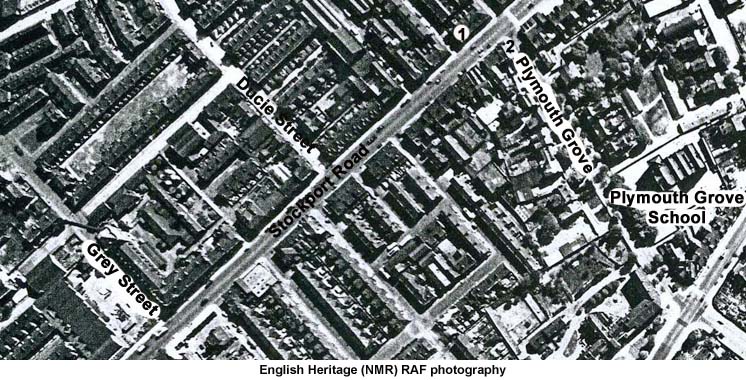

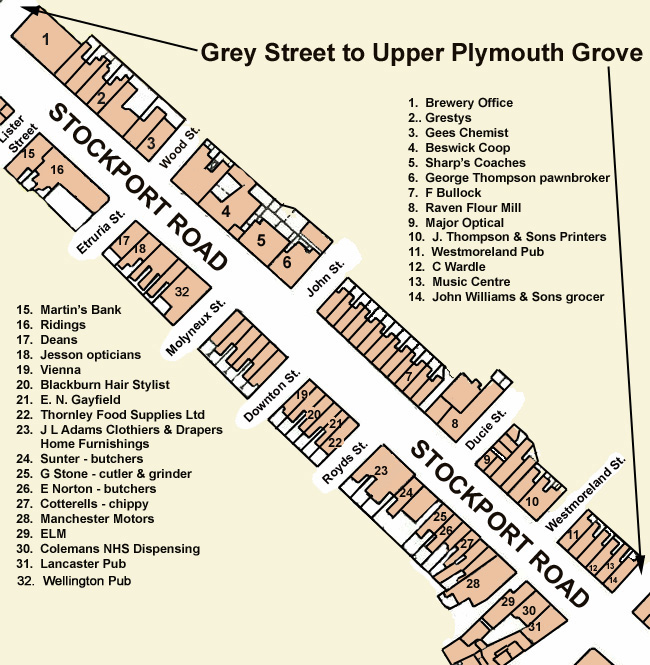
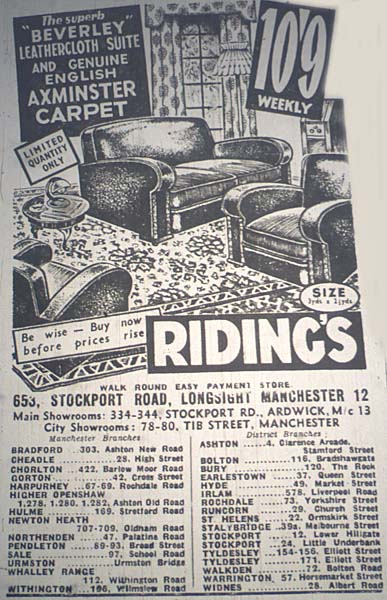
|
Below you will see
a description of each section of the road.
If you click on the link below each section it
will show you an image from the Manchester
Central Library Collection. Note:
This involves accessing the Library site and
sometimes it isn't available. Once you see
the opening page you can click on the image to
increase its size.
Upper Plymouth Grove to Grey Street - East Side  Upper Plymouth Grove
was the access road for children walking out of
Longsight to Plymouth Grove School. We crossed
Stockport Road at this point via the zebra crossing
and lollypop man. On the northern corner was
John Williams and Son, grocers.
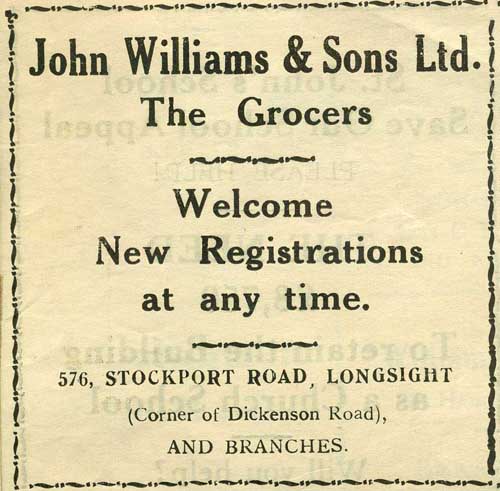 Williams and Son also had a "self-service" grocery shop, the closest thing we had to a supermarket, on the corner of Stockport Road and Dickenson Road. Beyond John Williams lay The Music Centre, Wardles and, on the next corner, The Westmoreland Arms pub. Section
1 image A
 I have heard
unsubstantiated claims that the Moors Murderer, Ian
Brady, lived on Westmoreland Street with his
mother. J. Thomas and Sons - Printers, stood
on the corner of Westmoreland Street and Stockport
Road
Section
2 image
******
 This block is
dominated by the Raven Flour Mill at the Ducie
Street end. From there to John Street is a
long terrace of small shops. The terrace had
rather elegant pairs of rounded windows and were
topped with dormers. The businesses included
F. Bullocks, grocer; J. Price - "Clothes of
Taste"; and a bicycle shop. It should be
noted that during this period Ducie Street became
Dillon Street and John Street became Halsbury
Street.
Section
3 image
******
 Four
substantial business premises made up the next
block. Starting with George Thompson,
Pawnbroker at the John Street end. My
father's suit visited there on a number of
occasions. Next door was Sharp's Luxury
Coaches. Sharps and Bullocks dominated
the coach trip business in our part of
Manchester. Just beyond was the ornate
terracotta front of the Beswick Coop. I
don't know the function of the last building
but the barred windows perhaps give a clue to
its use.
 Gee's, the
Chemist, stood on the northern corner of Wood
Street. In the 1895 directory there was a
Gee's Hairdressers located just a little further
south on Stockport Road. Whether there was
any connection isn't known. The third
building along the block was a sub post office
and at the end where Grey Street meets Stockport
Road stood the Atlas Brewery which eventually
became the Sarson Vinegar Works.
Section
5 image A
Section
5 image B
******
Upper Plymouth Grove to Grey Street - West Side  The great
Victorian pile of the Lancaster Pub stood
on the corner of Plymouth Grove West
during the time when the north side of
that street was lined with a rather grand
terrace of houses. The pub survived
into the 2000s but is now no more.
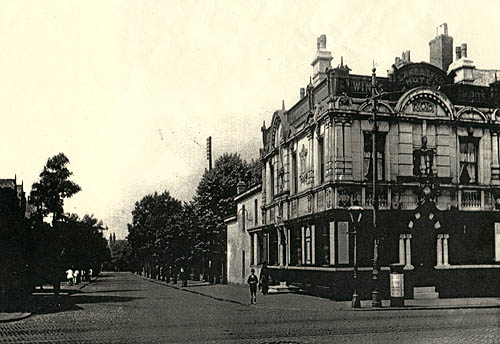 Next door was Coleman's the chemist sporting the words "NATIONAL HEALTH SERVICE" on its sign. It was once George Edwards - Allopathic & Homeopathic Chemist. Further along was Manchester Motors. Beyond this, but not shown in this photograph, was a chippy; E. Norton, butcher; G. Stone, Cutler and Grinder; and J. L. McAdam, Clothier and Drapers & Household Furniture. Section
6 image
******
 Beyond
Royds Street was an unassuming row of
small shops starting with Thornley
Food Supplies. Then E. N.
Crayfield Wholesale General
Warehouseman offering a wide variety
of stock including hardware. I
remember going there to buy bricketts
when there was no coal for the
fire. In the middle of the block
was Blackburn's Hair Styles.
Section
7 image
******
 Another
row
of small shops spanned the distance
from Downton Street to Molyneux
Street. It included a
newsagents.
Section
8 image
******
 The
only
building along this stretch of
Stockport Road to have survived
into the present day is the pub on
the corner of Molyneux
Street. It was the
Wellington Pub and my mother was a
cleaner there in the 1950s.
Today it is called The Gold Cup,
although I'm not sure what its
connection is to Cheltenham.
Beyond was Franks the paint and
wallpaper shop, Jesson's the
opticians with a window that
sported a spectacle shaped display
window. At the Etruria
Street end of the block was Deans
clothing shop.
Section
9 image
******
 Ridings
department
store dominated the next block
along. Ridings offered
"Everything on Weekly
Payments". Long before the
credit cruch families like mine
depended on the "Never-Never" to
buy things at places like
Ridings. At the end of the
block was a branch of Martin's
Bank. Martin's had a long
history stretching back to its
founder, Sir Thomas Gresham in
the 16th Century. Its
emblem was the
grasshopper. Martin's was
taken over by Barclays in 1969.
|